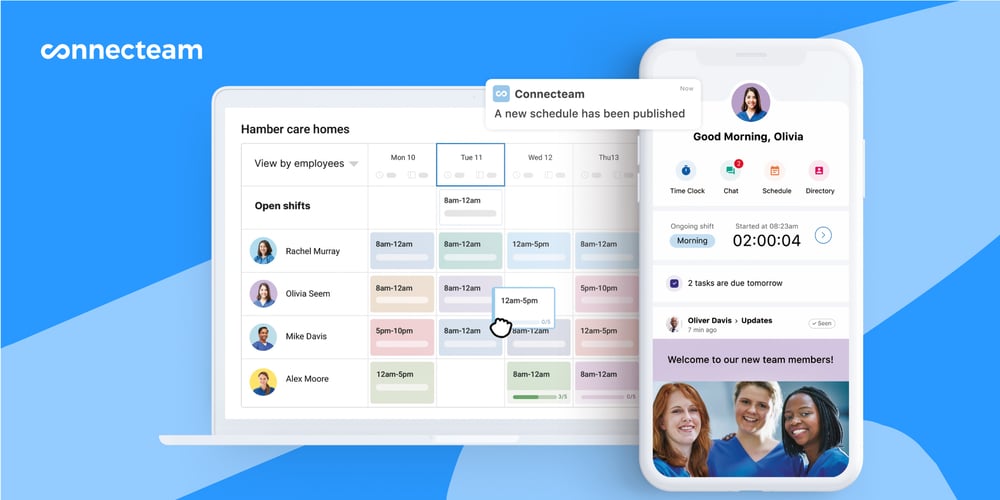The restaurant industry is full of specialized lingo that can be hard to understand for outsiders or people new to the business. In this article, I explain all the relevant terms and show you examples of how they can be used.
Starting your journey in the restaurant industry can be quite a task, especially when you’re trying to decipher all of the insider lingo.
One term that pops up frequently is “FOH,” short for Front of House.
In this blog post, I will guide you through what FOH means, its roles and responsibilities, and other essential terms used in this bustling industry.
Let’s dive into the exciting world of restaurant terminologies!
Key Takeaways
- FOH stands for Front of House in a restaurant and refers to the area and staff that interact directly with customers.
- Key roles within FOH include servers, hosts/hostesses, bartenders, bussers, and managers.
- Understanding common FOH lingo like “covers,” “86,” and “turn time” is vital for effective communication within the front of house.
What is FOH (Front of House) in a Restaurant?
FOH, also known as Front of House, refers to the area and staff in a restaurant that interacts directly with customers.
Definition and meaning
FOH stands for Front of House in a restaurant. The term refers to the areas of a bar or eatery where customers interact directly with the establishment and its staff.
Such spaces include the dining room, bar, entranceway, and patio— essentially any location visible to guests.
If you’re standing somewhere your customers can see you, there’s a good chance you are in the FOH zone!
Contrastingly, BOH stands for Back of House; this encompasses areas unseen by patrons, like kitchens and storage rooms.
Critical roles within FOH range from servers and bartenders to hosts/hostesses and bussers – all dedicated to creating an exceptional guest experience.
Understanding this term is fundamental as it helps ensure seamless communication between restaurant teams, leading toward efficient operations that ultimately enrich customer satisfaction levels.
Did You Know?
Not everyone is familiar with all terms of the restaurant industry. You can help keep your staff on the same page by creating a digital knowledge base where they can look up terminology, work policies, and anything else you want your staff to have access to. Try out Connecteam’s all-in-one employee software to improve your restaurant operations.
Get started with Connecteam for free today!
Roles and responsibilities
The FOH, or Front of the House, carries a great deal of responsibility in ensuring guests have a positive dining experience.
Here are several roles of front of house staff and their associated tasks:
- Server: This role involves taking orders, serving meals to customers, and clearing tables after meals. Servers can make or break a meal for customers through their level of service.
- Host: The host greets guests upon arrival and leads them to their table. A friendly host can set the tone for an enjoyable meal.
- Bartender: The bartender mixes drinks and serves them to patrons at the bar and through servers. Knowledgeable bartenders often enhance the guest’s experience with their creativity and drink pairings.
- Busser: This person is responsible for cleaning up tables as soon as guests leave, resetting them quickly for the next guests.
- Manager: The restaurant manager oversees all FOH staff, resolves any issues that arise during service, interacts with guests, and ensures everyone leaves satisfied at the end of their meal.
This Might Interest You
We spoke to experienced restauranteurs and collected expert tips on how to manage a restaurant the right way.
Common FOH Restaurant Terms and Lingo
In the front of the house, there are several common terms and lingo that restaurant staff use to communicate efficiently.
These include phrases like “86”, which means that an item is no longer available, or “tip out,” referring to staff sharing tips with other staff members.
Understanding these terms is crucial for effective communication in a restaurant setting.
- Bar Back: An assistant to the bartender. Example: “The bar back will restock the liquors.”
- Busser: Someone who clears tables and assists the servers. Example: “The busser will clean your table shortly.”
- Corkage Fee: A charge for opening and serving wine brought by the guest. Example: “There’s a $15 corkage fee for outside wine.”
- Double: Working two shifts in one day. Example: “I have a double today, lunch and dinner.”
- Expo: The person who organizes and checks the dishes before they go to the table. Example: “The expo will ensure your order is correct.”
- Fire Table: A table that is particularly troublesome or demanding. Example: “Table seven is a fire table tonight.”
- Guest: A customer at the restaurant. Example: “We have a guest with a nut allergy.”
- Host Stand: The area where the host or hostess is stationed. Example: “Please wait at the host stand to be seated.”
- Jack: To steal a table from another server. Example: “I didn’t jack your table, the host assigned it to me.”
- Kitchen Sync: Including all available ingredients. Example: “The guest wants a salad with the kitchen sync.”
- Last Call: The last opportunity to order before the bar closes. Example: “It’s last call, do you want another drink?”
- Menu Rollout: Introduction of a new menu. Example: “We have a menu rollout next week.”
- No-Show: A reservation that doesn’t arrive. Example: “We have a no-show for the 7:30 reservation.”
- Overbook: To accept more reservations than there is space available. Example: “We are overbooked tonight.”
- Patio Pounder: A light, refreshing alcoholic beverage suitable for outdoor drinking. Example: “This white sangria is a real patio pounder.”
- Quadrant System: Serving method where the plate is divided into four quadrants. Example: “Serve the guest using the quadrant system.”
- Runner: Someone who delivers food to the tables. Example: “The runner will bring your dishes out shortly.”
- Section: The area of the restaurant a server is responsible for. Example: “Your section is the six tables near the window.”
- Tip Out: Sharing tips with other staff members. Example: “I have to tip out the bussers and the bar.”
- Upcharge: An additional charge for a substitution or addition. Example: “There’s an upcharge for the truffle fries.”
- VIP: A very important person or guest. Example: “We have a VIP coming in tonight, ensure everything is perfect.”
- Waitlist: A list of guests waiting for a table. Example: “Put them on the waitlist, it will be about 30 minutes.”
- Zagat Rated: A restaurant that has been reviewed and rated by the Zagat guide. Example: “We are a Zagat-rated establishment.”
- Barrel Aged: Liquor that has been aged in a barrel. Example: “We have a new barrel-aged bourbon.”
- Counter Service: Service provided at a counter rather than at a table. Example: “We offer counter service during lunch.”
- Dine and Dash: Leaving the restaurant without paying. Example: “We had a dine and dash on table four.”
- Early Bird Special: A discounted price for diners who eat earlier in the evening. Example: “The early bird special ends at 6 PM.”
- Feature Sheet: A list of the day’s specials. Example: “Check the feature sheet for today’s soup.”
- Gooseneck: A long, thin spout on a kettle or pot. Example: “Use the gooseneck to pour the hot water.”
- Happy Hour: A period of the day when drinks are sold at reduced prices.
Common BOH Restaurant Terms and Lingo
Explore the fascinating world of BOH restaurant terms and lingo, from “86” to “mise en place,” and discover how they contribute to the smooth operation of a kitchen.
Examples and explanations of BOH lingo
Certainly! Here is the alphabetically sorted list with the term bolded and the example in italics:
- 86: To signify that a particular item on the menu is no longer available. Example: “We have to 86 the clam chowder; we’re out of clams.”
- Al Dente: Cooked so it’s still firm when bitten. Example: “The pasta should be cooked al dente.”
- Bain-Marie: A container holding hot water into which a pan is placed for slow cooking. Example: “Melt the chocolate in a bain-marie.”
- Chiffonade: Slicing leafy vegetables or herbs into thin strips. Example: “Chiffonade the basil for garnish.”
- Day Dot: Label indicating the preparation date of a food item. Example: “Check the day dot on that soup before serving.”
- Deglaze: To loosen the flavorful residue in a pan by adding liquid. Example: “Deglaze the pan with white wine.”
- Emulsify: To mix two liquids together that normally don’t mix well. Example: “Emulsify the oil and vinegar for the dressing.”
- Expo: Short for expeditor, the person who organizes the flow of dishes from the kitchen to the dining room. Example: “The expo will call out the orders to the kitchen and ensure they are served in a timely manner.”
- Family Meal: A meal provided by the restaurant for the staff. Example: “Today’s family meal is spaghetti bolognese.”
- Fire: A command often used by the chef to start cooking a particular order. Example: “Fire the steaks for table six!”
- Fish Spatula: A slotted, flexible spatula used for cooking fish. Example: “Use the fish spatula to flip the salmon.”
- Fryer Basket: A basket placed in a deep fryer to cook food in hot oil. Example: “Place the fries in the fryer basket.”
- Garnish: Decorative items added to enhance the presentation of a dish. Example: “Garnish the soup with fresh herbs.”
- Hollandaise: A sauce made of egg yolks, butter, and lemon juice. Example: “Serve the asparagus with hollandaise.”
- Infuse: To steep ingredients in a liquid to extract flavors. Example: “Infuse the milk with vanilla.”
- Jus: A light gravy or sauce made from meat juices. Example: “Serve the roast beef with jus.”
- Julienne: To cut vegetables into thin strips. Example: “Julienne the carrots for the salad.”
- Knock Back: To deflate risen dough before shaping it. Example: “Knock back the dough and divide it into rolls.”
- Marry: Combining two partially filled containers of the same item. Example: “Marry the ketchup bottles before restocking.”
- Meat and Two Veg: A dish consisting of a portion of meat and two vegetables. Example: “Today’s special is meat and two veg.”
- Mise en Place: A French term meaning “everything in its place,” referring to the preparation and organization of ingredients before the start of service. Example: “Ensure your mise en place is ready before the dinner rush starts.”
- On the Fly: Used when a dish needs to be prepared quickly due to an error or a customer’s special request. Example: “We need a Caesar salad on the fly; the guest changed their order.”
- Pittsburgh Rare: A steak charred on the outside but rare on the inside. Example: “One steak, Pittsburgh rare, on order!”
- Quartered: Cut into four equal pieces. Example: “The pizza should be quartered before serving.”
- Roux: A mixture of flour and fat used as a thickening agent. Example: “Start the béchamel sauce with a roux.”
- Sear: To brown the surface of food quickly at high temperature. Example: “Sear the tuna on both sides.”
- Shuck: To remove the shell from seafood. Example: “Shuck the oysters before the service starts.”
- Skim: To remove impurities from the surface of a liquid. Example: “Skim the stock every half hour.”
- Temper: To slowly bring up the temperature of a food item. Example: “Temper the eggs before adding them to the hot mixture.”
- Tweezer Food: Dishes that require the use of tweezers to assemble. Example: “This appetizer is tweezer food, be careful with the presentation.”
- Umami: A basic taste sensation that is savory. Example: “The mushrooms add umami to the dish.”
- Vinaigrette: A mixture of oil and vinegar. Example: “Dress the salad lightly with vinaigrette.”
- Whetstone: A stone used for sharpening knives. Example: “Use the whetstone to sharpen the chef’s knives.”
- Yield: The amount of product obtained after processing. Example: “The yield of this recipe is four servings.”
- Zest: The outer peel of citrus fruit. Example: “Add lemon zest to the cake batter.”
Differences Between FOH and BOH (Back of House)
BOH refers to the Back of House in a restaurant, where food is prepared and cooked.
Definition and meaning of BOH
BOH, which stands for Back of House, refers to the behind-the-scenes areas of a restaurant where food preparation and operations take place. This includes the kitchen, storage areas, and offices.
In the BOH, you’ll find chefs, cooks, dishwashers, and other kitchen staff working hard to ensure that meals are prepared efficiently and meet quality standards.
Effective communication and coordination between both FOH (Front of House) and BOH are crucial for a successful restaurant operation.
This Might Interest You
Read 9 effective communication strategies for the workplace that help you communicate more efficiently with your staff.
Roles and responsibilities in the BOH
The Back of House (BOH) in a restaurant is responsible for various tasks to ensure the smooth running of the kitchen and food preparation. Here are some key roles and responsibilities in the BOH:
- Chefs: They oversee the entire kitchen operations, including menu planning, recipe creation, and food preparation. They ensure that each dish is cooked to perfection.
- Line Cooks: They work alongside chefs and are responsible for cooking different components of a meal. Line cooks handle specific stations such as grill, sauté, or fryer.
- Prep Cooks: They assist in preparing ingredients by chopping vegetables, marinating meats, or making sauces. Prep cooks help with assembling dishes before they are cooked.
- Dishwashers: They are responsible for washing and sanitizing dishes, utensils, and kitchen equipment. Dishwashers keep the kitchen clean and organized by maintaining a steady supply of clean plates and utensils.
- Kitchen Managers: They oversee the overall operations of the BOH, including staff scheduling, inventory management, and ensuring compliance with food safety regulations. Kitchen managers also coordinate between FOH and BOH to maintain efficiency.
- Cleaning and Maintenance Staff: These individuals focus on keeping the kitchen area clean at all times by mopping floors, sanitizing surfaces, emptying trash bins, and restocking supplies.
- Food Safety Compliance: The BOH ensures that all food safety standards are met by following proper storage procedures, monitoring temperature controls for perishable items, and implementing hygiene practices among staff.
- Organization: Maintaining an organized kitchen is crucial for efficient workflow in the BOH. This involves keeping ingredients properly labeled and stored, arranging equipment strategically for easy access during busy periods.
Importance of Understanding FOH Terms and Lingo
Understanding FOH terms and lingo is crucial for effective communication and efficient operations in the restaurant industry.
Communication and efficiency in the restaurant industry
Understanding the terms and lingo used in the front of house is crucial for effective communication and improving efficiency in the restaurant industry.
By speaking the same language as your team, you can ensure that everyone is on the same page and avoid misunderstandings or errors in service.
Additionally, clear communication between FOH staff and back-of-house (BOH) staff is vital to ensure smooth operations and timely delivery of food to customers.
Having a shared understanding of FOH terms and lingo creates a cohesive environment where tasks are executed efficiently, leading to a positive dining experience for guests.
How Connecteam Helps You Run Your Restaurant Better
Connecteam is a game-changer for running your restaurant more efficiently.
At the core of this all-in-one employee management software lies employee scheduling, a fundamental aspect of restaurant management. With Connecteam, you can effortlessly create schedules, assign roles, and instantly notify your staff via the mobile app, ensuring that each shift is adequately staffed, reducing conflicts, and promoting smooth operations.

Another vital feature is time tracking, which simplifies the process for employees to clock in and out using their mobile devices. This not only guarantees precise payroll processing but also aids in minimizing labor costs by preventing unauthorized overtime.
Connecteam also simplifies task management, allowing you to easily assign, track, and manage daily operational tasks. This means no more bottlenecks in the kitchen, efficient cleaning routines, and better control over inventory.
When it comes to training and onboarding, Connecteam streamlines the process by digitizing it. You can upload training materials and onboarding documents, expediting the integration of new hires. This not only reduces training expenses but also ensures that new employees become productive quickly.

Effective communication is paramount in restaurant management, and Connecteam facilitates real-time communication with updates, announcements, and messaging through the app. This keeps your team well-informed and encourages collaboration.
Connecteam brings together scheduling, time tracking, task management, training, and communication to enhance restaurant management’s efficiency and overall success.
Conclusion
Understanding FOH terms and lingo is crucial for those in the restaurant industry. It allows professionals to communicate effectively with each other, ensuring efficient operations and a positive customer experience.
From waitstaff to managers, knowing the ins and outs of FOH helps create a welcoming atmosphere for guests and keeps everything running smoothly.
So if you’re aspiring to be part of the restaurant world, don’t forget to familiarize yourself with these important front-of-house terms!
FAQs
What does FOH mean in the restaurant industry?
FOH, or Front of House, refers to all areas where customers interact with staff, such as the dining room and bar in a restaurant.
How is FOH different from other parts of a restaurant?
FOH represents public-facing areas while the kitchen and storage spaces are known as ‘back-of-house.’ Both sections work together to ensure smooth operation but have distinct roles.
Can anyone explain some common FOH Restaurant Lingo?
Common FOH lingo includes terms like “86” meaning an item is out of stock, “in the weeds” representing being overloaded with work, which help streamline communication across various FOH positions.
Why is understanding the meaning of FOH important for someone working in a restaurant?
Knowing what FOH means can improve job performance by helping staff understand their responsibilities within this specific area and reinforcing efficient collaboration between front and back house operations.


